Previous: To the Lake
Hiking Black Tusk 2008
Finally we could see Black Tusk. It is the hard lava core of an ancient volcano. The cone eroded, leaving the black rock inside.
Although it looks flat on top, that is only a trick of this perspective. It actually slopes from the left up to its peak at the right.
We climbed the gravel to its base at its right side, and then going along the edge we went to its back at the left.
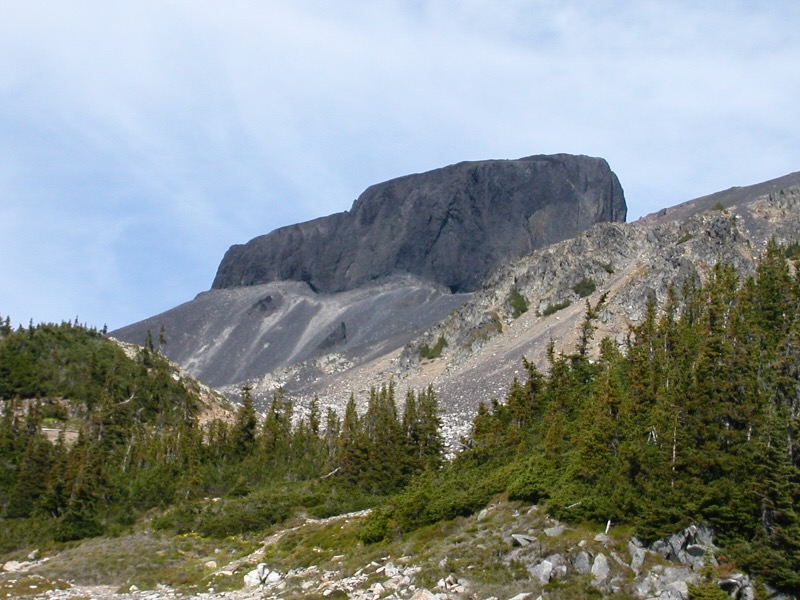
The Tusk rock is actually somewhat crumbly because it has many fractures related to how it cooled. The patterns can be seen in the wall just below the peak.
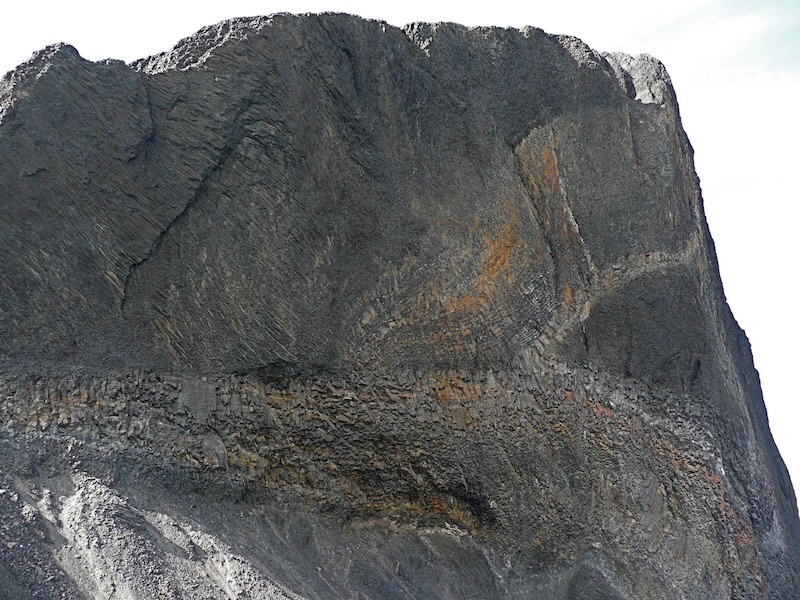
And that wall is very vertical!

This looks back the way we came up. It was sloping slippery slidy scree. To the left we are about to scramble up a chimney.
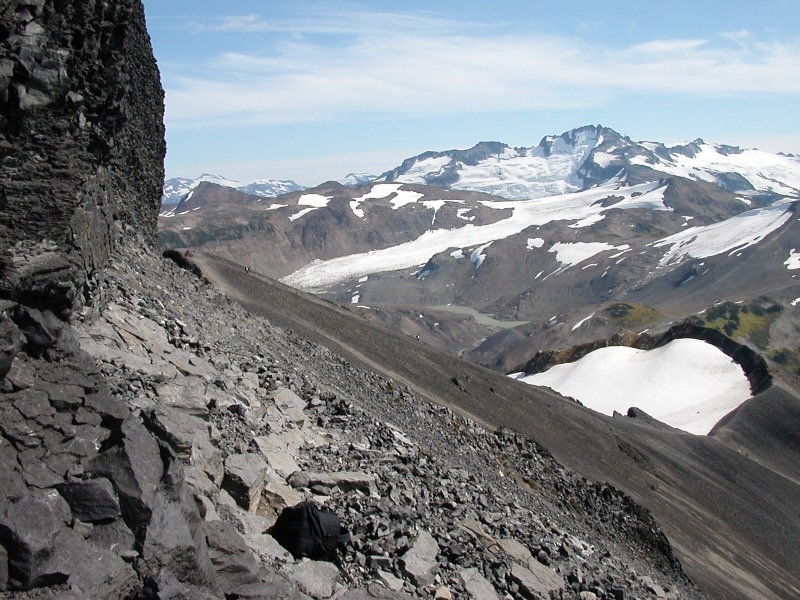
The texture in the rock made this climb be pretty easy. Lots of foot-holds and lots of hand-holds. The trick is to be sure each hold stays put! (Grab, wiggle it, then sort of trust it.)
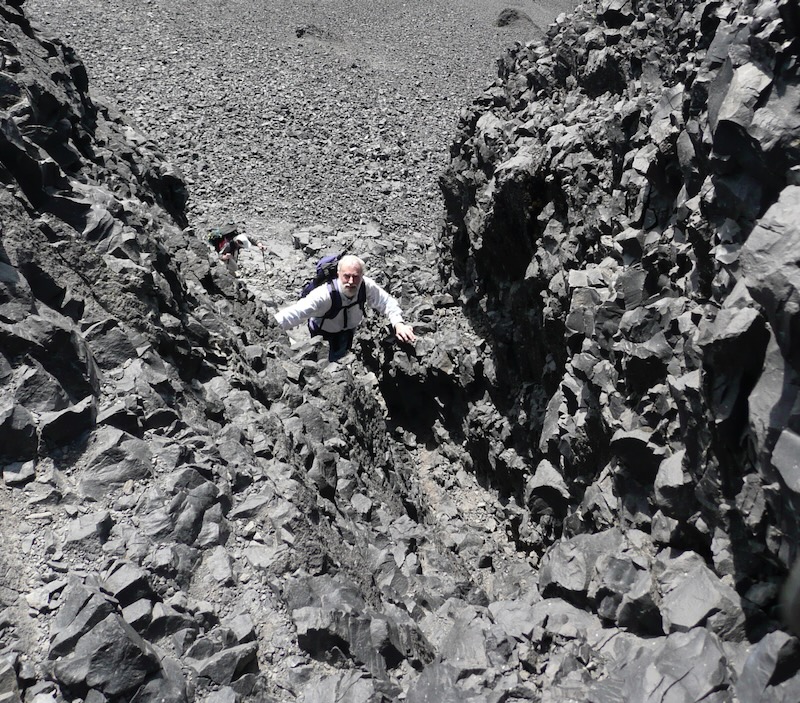
This section was as steep as a ladder.

After that, the slope was pretty mild going to the top (at the left).
Although the rock is black, it is more like a matte-finish glass material and not a sooty charcoal. (I found a rock that would ring like a bell when struck.)
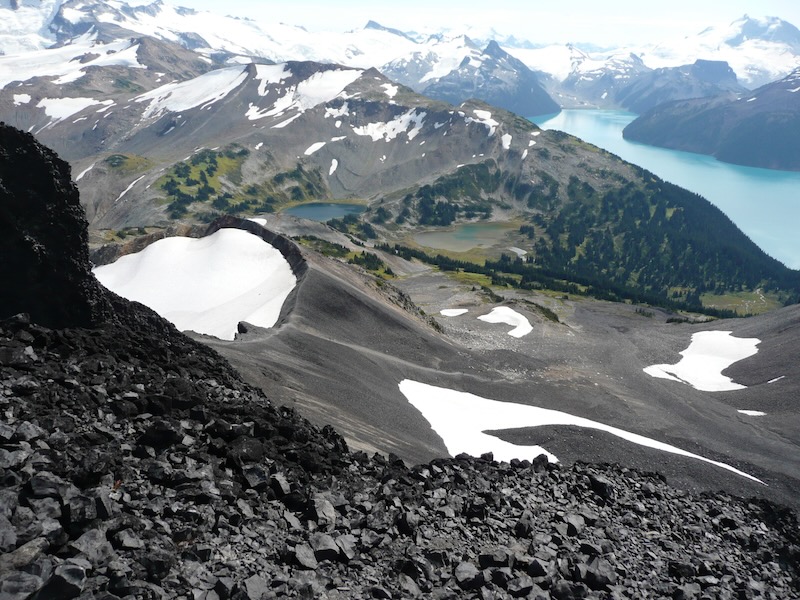
From the top over that vertical wall, the drop-offs were tremendous.
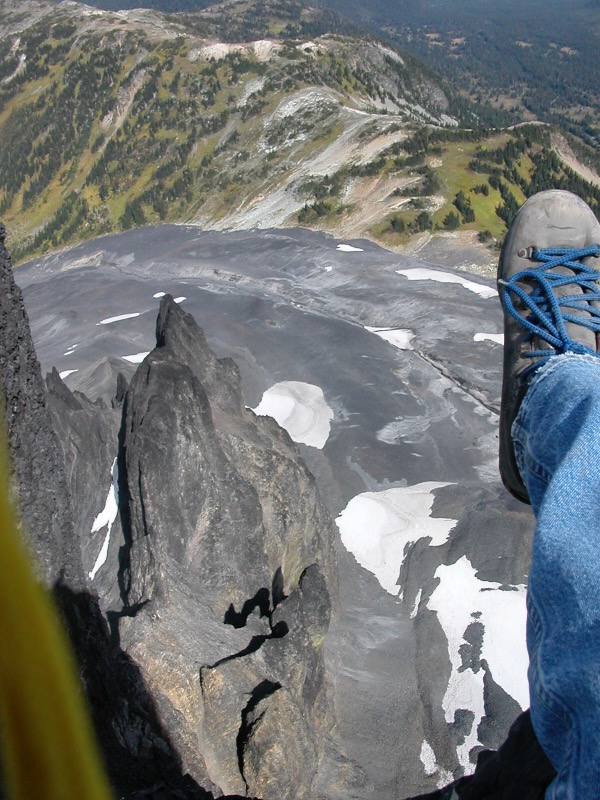
We ate lunch on top.

There were glaciers all the way around you.
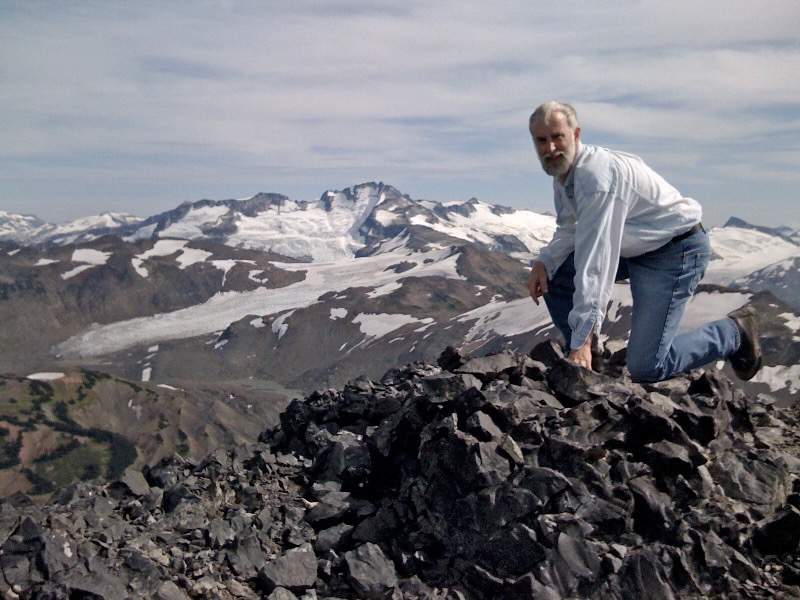
Coming down was a lot faster. I was able to ski down this slope through the gravel. It was an easy, quick descent and was fun!
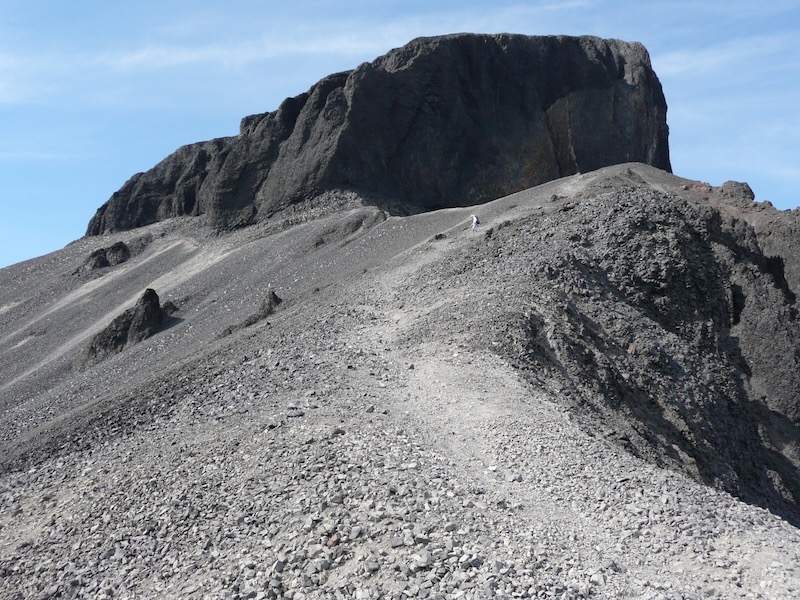
We went out a slightly different route to get a different view. This looks back on where we climbed up the chimneys. We had climbed the crack on the left and followed the zig-zag trail on the left up to the top.

A final view from a meadow.
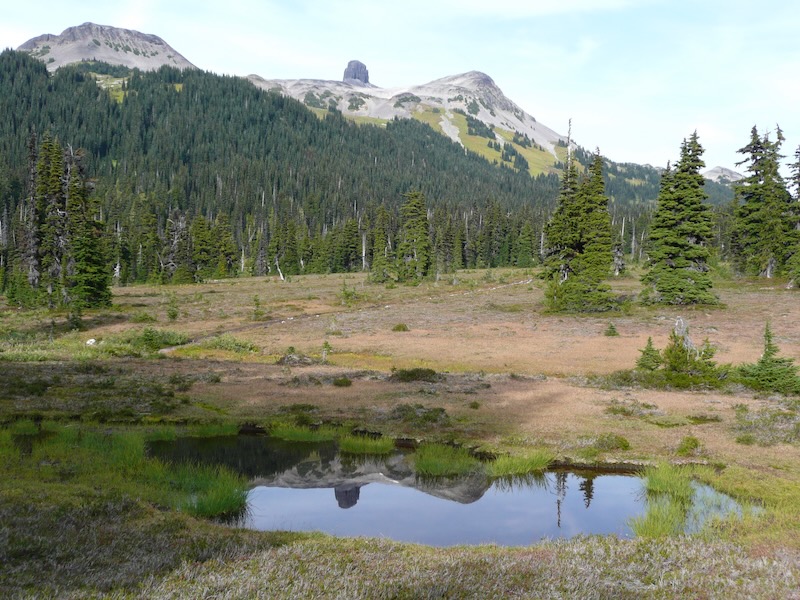
Fall colors were starting to show.
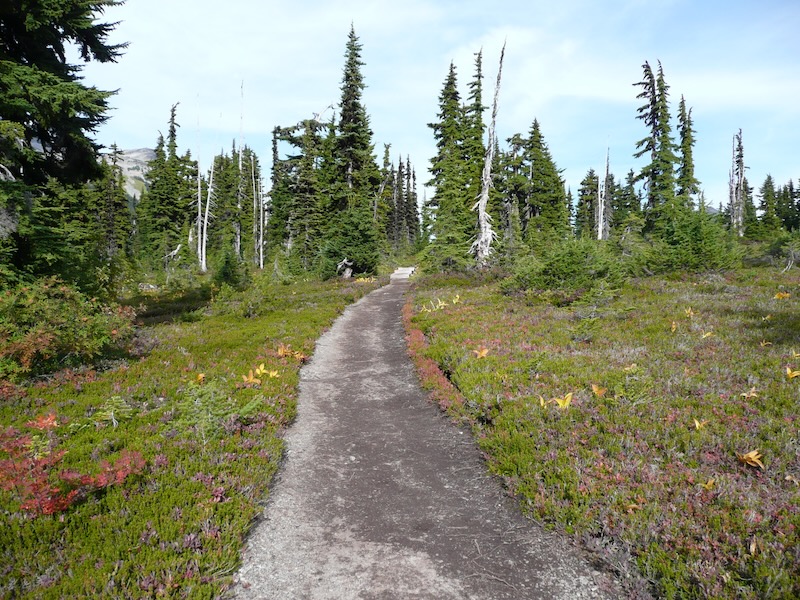
The trail out was also beautiful, but it was long and we were tired when we got to the car.
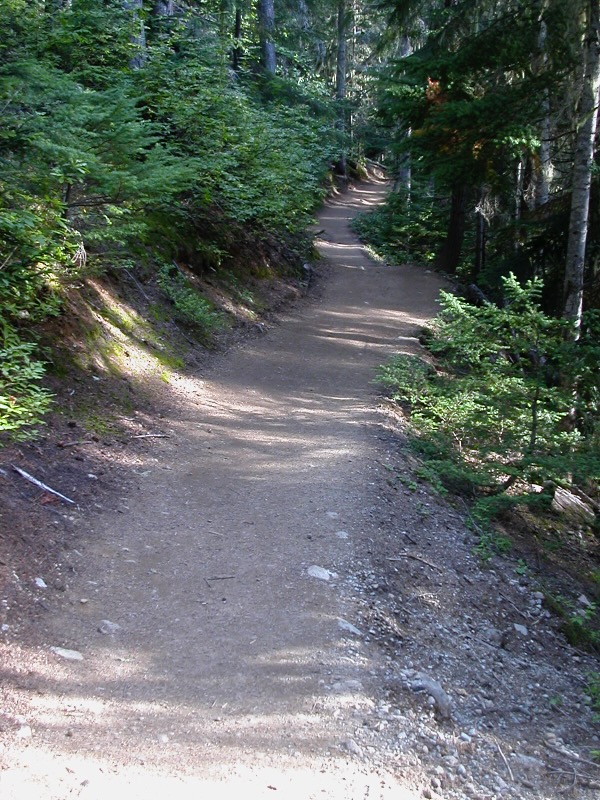
The round trip was 20 miles on foot, but it was well worth it.
Previous: To the Lake
